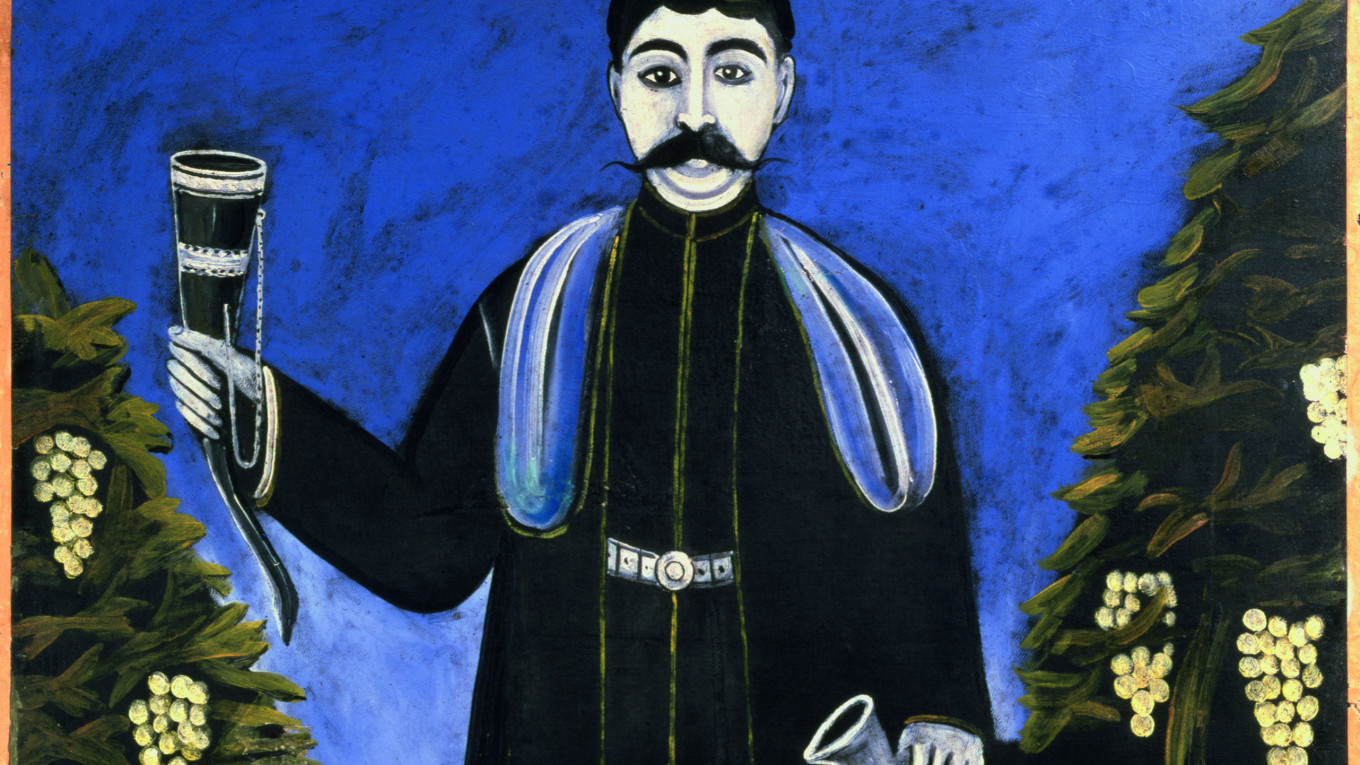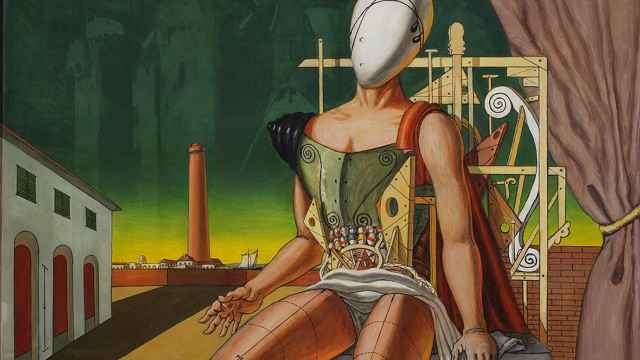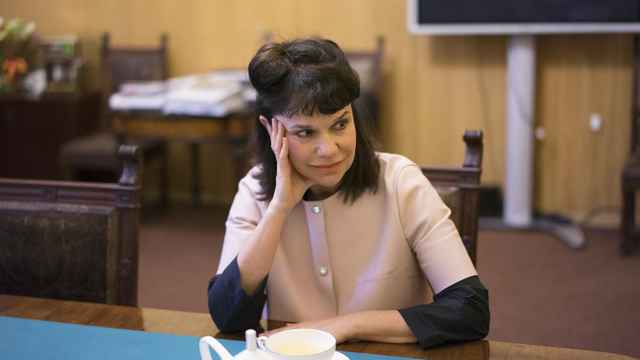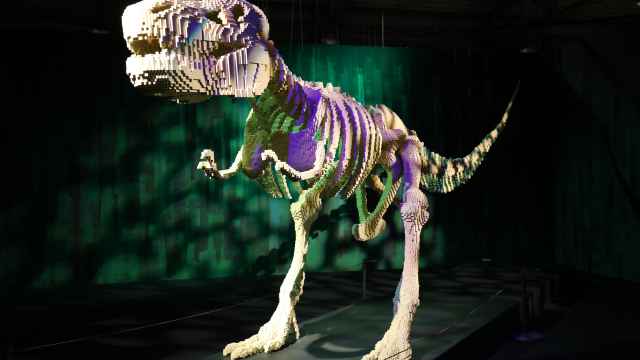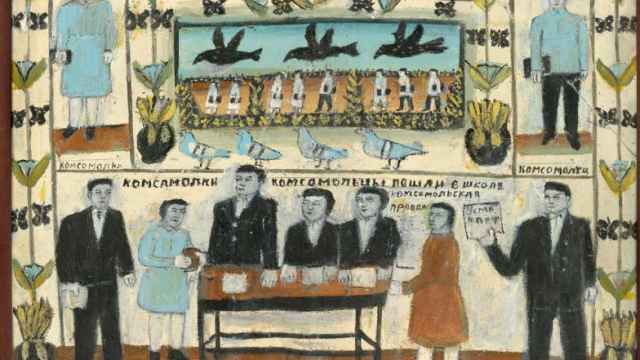Toward the end of 2016, the Pushkin Museum of Fine Arts opened a major exhibit celebrating Georgian avant-garde art from 1900 to the 1930s. This is the first large scale exhibition of Georgian avant-garde artists in Russia.
Curators painstakingly collected works from multiple museums and private Georgian and Russian collections to make this exhibit a reality. They assembled over 200 works by such artists as Niko Pirosmanashvili (Pirosmani) (1863-1918), Vladimir (Lado) Gudiashvili (1896-1980), David Kakabadze (1889-1952) and many others.
Marina Loshak, the museum’s director and one of the people behind the exhibition’s original concept, said in an interview to The Moscow Times that “there had always been great interest in Georgian avant-garde art, but the opportunity to organize such a massive exhibition only just opened up.”
Walking through a sequence of the most influential painters from this unique school of Georgian art is a powerful experience. Kakabdze’s mesmerizing abstract compositions, Zygmunt Waliszewski’s depictions of scenes in France and Germany, and Kirill Zdanevich’s “Orchestral Self-Portrait” make some of the most lasting impressions from the exhibit.
The most fascinating angle of the exhibit is how it captures the Georgian artistic and cultural exchange with Russia and Europe. At the time, the avant-garde movement influenced not just Georgian art, but also literature, music and theatre. Tbilisi, or “Little Paris,” was at the center of Georgian artistic activity. Curators have taken great care to show viewers how historical and cultural ties between Russia and Georgia were inextricably linked to the discourse of the Georgian avant-garde movement.
“Georgian and Russian culture have always been close,” said
Loshak. “At the turn of the 20th century, Georgia was a kind of
paradise for Russian artists, poets, and writers — a space where
there was somehow more freedom. In the first third of the 20th
century, Russians and Georgians studied alongside each other
in Paris. It was a veritable ‘hotpot’ of cultural relations and traditions,”
she added.
The Georgian avant-garde exhibition echoes another one, “Iliazd.
Ilia Zdanevich’s 20th Century,” held at the Pushkin Museum
last year. Ilia Zdanevich was a poet, a designer, an anthropologist,
and a publisher. While in Tbilisi, Zdanevich and his artist brother
Kirill, first discovered Pirosmani. Niko Pirosmanashvili was a
self-taught painter who worked at a variety of menial jobs, from
dairy farmer to railroad conductor. His primitive paintings were
rather popular among locals, and that’s how Zdanevich’s brothers
found out about him.
Ilia Zdanevich wrote an article praising Pirosmani’s work for a Moscow newspaper in 1913. That same year, Russian poet Mikhail Le Dantu purchased five of Pirosmani’s paintings and displayed four of them at the avant-garde exhibit “Target” in Moscow, Pirosmani’s first show. You can view the contents of Le Dantu’s sketchbook from his visit to Tbilisi, “Caucasian Album,” which was largely influenced by Pirosmani, on the third floor of the exhibit.
Some of Pirosmani’s best-known pieces, such as “Brother and Sister” or “Prince with a Wine Horn,” are also on the third floor of the exhibit. His paintings are noted for their minimalism and animalism. Only about 200 of his works have survived until the present day. Pirosmani is now considered one of the major naive style painters of the 20th century along with Henri Rousseau. “Pirosmani has always been the hero of intellectuals, so there’s always an interest in his works. We tried to gather as many of his works as possible,” said Loshak.
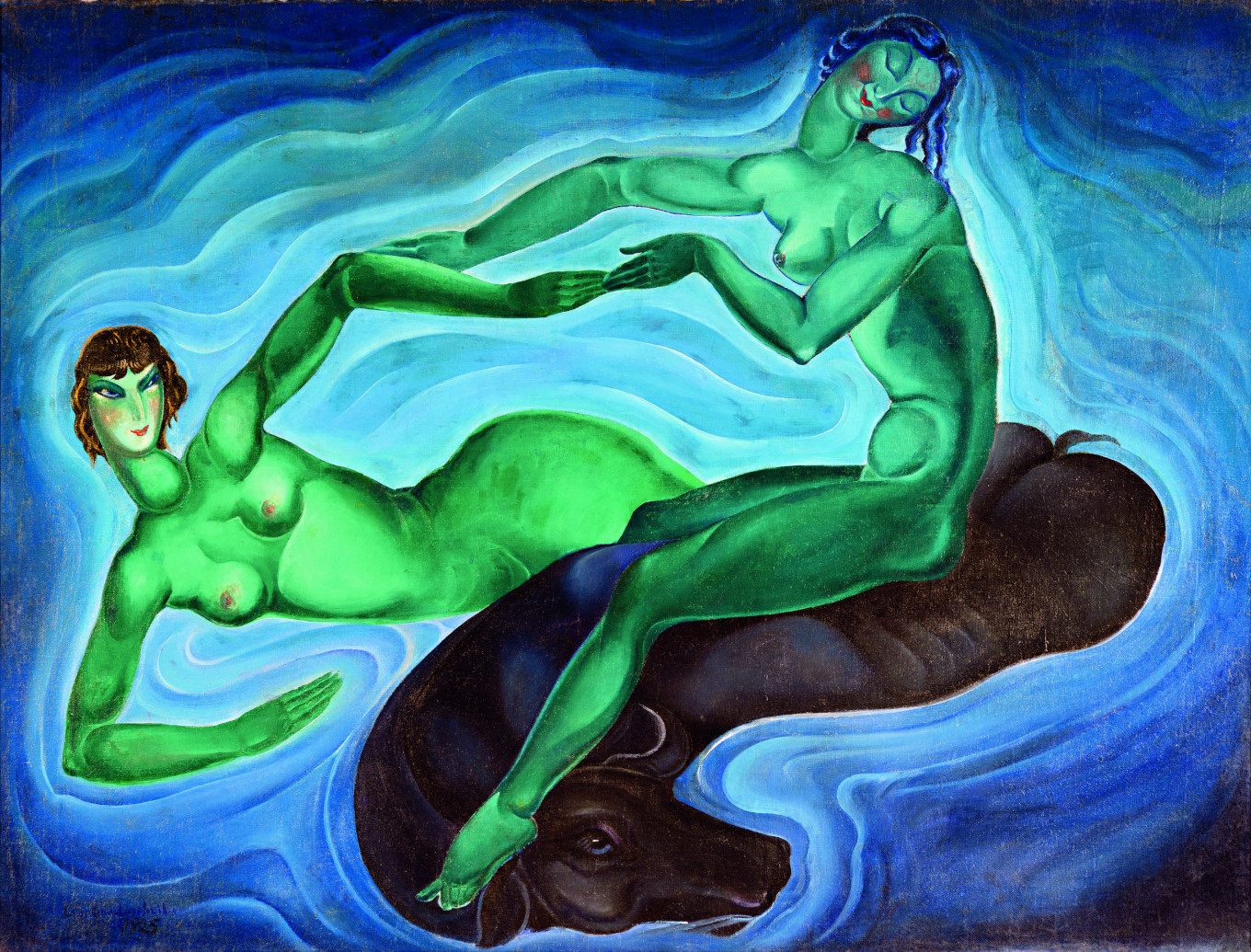
The second floor of the exposition hosts the works of Lado Gudiashvili, Alexander Bazhbeuk-Melikov, Elene Akhvlediani and Kirill Zdanevich. Influenced by Pirosmani, Gudiashvili’s brilliant use of blues and greens captures attention in paintings like “Green Woman.” “Gudiashvili is one of the most popular artists among Georgian collectors. After his studies in Paris, he became extremely productive, and there are many works on the market from that period. But the paintings he did in Paris are much harder to find,” said Loshak. Gudiashvili stayed in Georgia and lived a very long life, until 1980, although his relationship with the Soviet authorities was rather tumultuous.
Additionally, there is a section of the exhibition that is dedicated to the Georgian avant-garde theater of the time, where visitors can see theatrical costumes and sketches of stage sets. On the ground floor of the exhibit you can see the abstract works of David Kakabadze, as well some introductory videos on the Georgian avant-garde.
The exhibition displayed more Georgian avant-garde works from private collections than from museums. “We couldn’t get works from Georgian museums as our countries don’t have diplomatic relations,” commented Loshak. “Although every step towards each other tends to humanize the dialogue. I believe that cultural bridges like this exhibition can really improve the relationship between our countries. Our love and respect for each other haven’t changed, and we miss each other,” added Loshak.
A Message from The Moscow Times:
Dear readers,
We are facing unprecedented challenges. Russia's Prosecutor General's Office has designated The Moscow Times as an "undesirable" organization, criminalizing our work and putting our staff at risk of prosecution. This follows our earlier unjust labeling as a "foreign agent."
These actions are direct attempts to silence independent journalism in Russia. The authorities claim our work "discredits the decisions of the Russian leadership." We see things differently: we strive to provide accurate, unbiased reporting on Russia.
We, the journalists of The Moscow Times, refuse to be silenced. But to continue our work, we need your help.
Your support, no matter how small, makes a world of difference. If you can, please support us monthly starting from just $2. It's quick to set up, and every contribution makes a significant impact.
By supporting The Moscow Times, you're defending open, independent journalism in the face of repression. Thank you for standing with us.
Remind me later.


